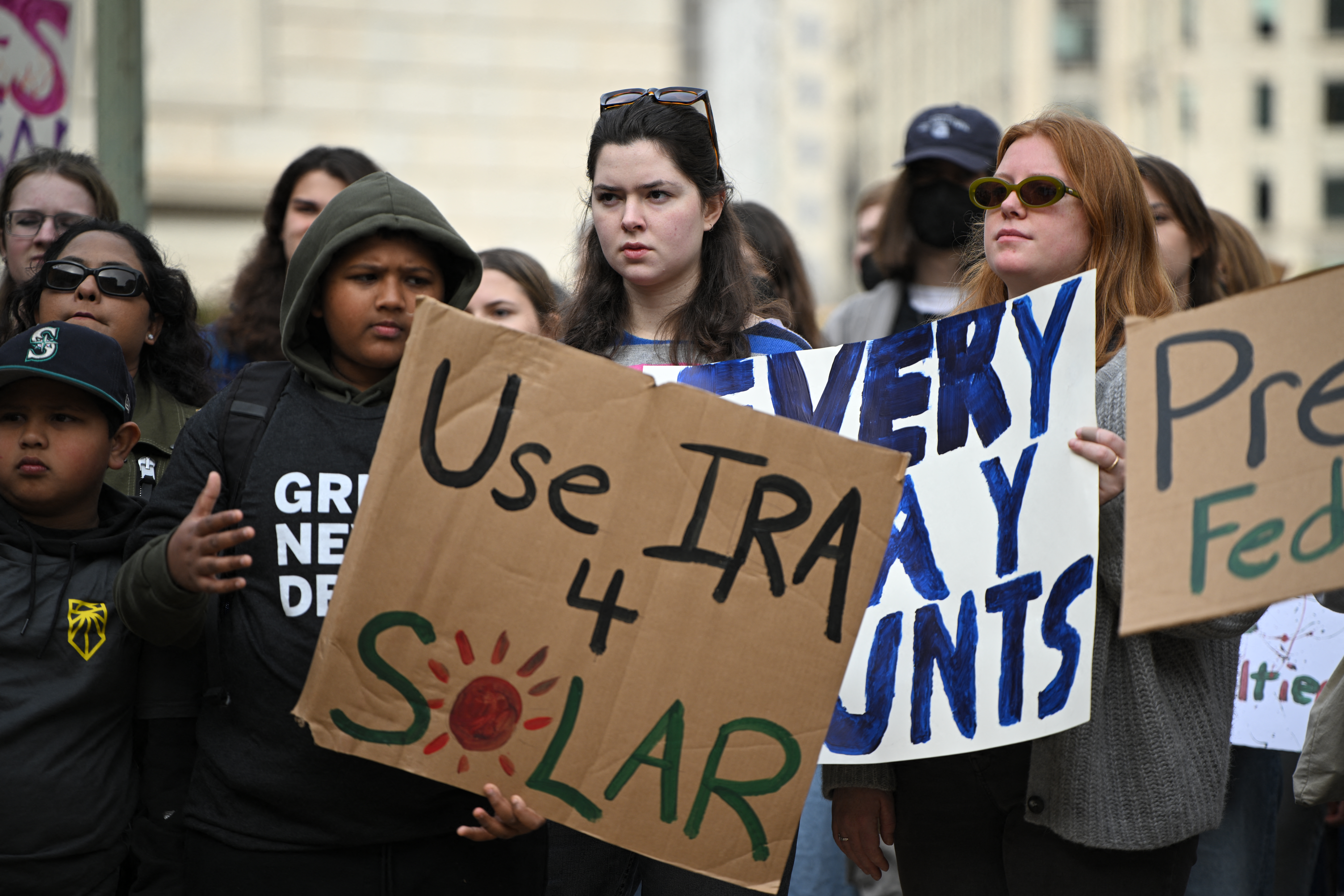Queen Elizabeth II, the enduring and globe-trotting British monarch who over nearly seven decades on the throne shepherded her country through economic, political and social upheaval and became an icon of royal poise — even in the face of family turmoil — has died. She was 96.
The palace announced she died at Balmoral Castle, her summer residence in Scotland, where members of the royal family had rushed to her side after her health took a turn for the worse.
Watch NBC6 free wherever you are
Her death leaves her 73-year-old son Charles as Britain's monarch, though the coronation might not take place for months. The former Prince of Wales will be known as King Charles III, ending speculation about whether would use another name during his reign.
In a statement from Buckingham Palace, His Majesty the King said the death of his mother is "a moment of the greatest sadness for me and all members of my family."
Get local news you need to know to start your day with NBC 6's News Headlines newsletter.
"We mourn profoundly the passing of a cherished Sovereign and a much-loved mother. I know her loss will be deeply felt throughout the country, the Realms and the Commonwealth, and by countless people around the world."
Her death kicks off a 10-day period of mourning that will lead up to her funeral. Her body is expected to be moved to Edinburgh on Saturday via train procession. Her body will stay there for three days before being moved to London for a public viewing at Buckingham Palace. The funeral will be at Westminister Abbey on Day 10, which will be next Sunday.
The queen is expected to be buried in the Royal Burial Ground on the Frogmore Estate close to Windsor Castle.
U.S. & World
In recent months, Her Majesty had trouble moving around and pulled out of many public events, including limiting her appearances during her four-day Platinum Jubilee in June, which marked the monarch’s 70 years on the throne. Palace officials said at the time she experienced some “discomfort” during those events.
Elizabeth appointed her last prime minister on Tuesday, Sept. 6, inviting Liz Truss to form the next British government. The meeting between the two women took place at Balmoral Castle in Scotland, a break with centuries of tradition. The audience typically takes place at Buckingham Palace. Truss is the queen’s 15th prime minister. The first was Winston Churchill.
The Queen’s last public engagement was on July 15, when she officially opened a new hospice, Thames Hospice, in Maidenhead, England, accompanied by her daughter Princess Anne.
While the longest serving monarch in British history never abdicated, she began turning over more responsibilities to Charles in 2013. That process accelerated following the death of her husband, Prince Philip, on April 9, 2021, at the age of 99.
Charles’ increased role began gradually, when the queen began cutting back on long-haul flights, resulting in Charles taking her place at a 2013 Commonwealth Heads of Government meeting in Sri Lanka.
Then in 2017, he represented the queen at the annual Remembrance Day ceremony marking the end of World War I, laying the monarch’s wreath at the foot of the Cenotaph in London. It was the first time the queen had not performed the solemn ritual, other than when she was pregnant or out of the country.
Still, Elizabeth continued to reign, but without Philip, the man the queen called her “strength and stay,” a source of emotional support in her often lonely job.
Elizabeth arguably did more than any of her predecessors to modernize the crown, making it appear more sensitive to the needs of the public during an era in which Great Britain's global influence waned, the British media's obsession with the royal family deepened and a growing segment of the population questioned why the country needed to prop up a monarchy whose purpose was mostly symbolic.
She presided over the transfer of former colonies into independent states, supported changes that would give daughters and sons equal rights to the throne, agreed to pay income taxes, visited Ireland, appeared in documentaries and shook hands with ordinary citizens.
"I have to be seen to be believed," Elizabeth once explained, according to one of her official biographers.
Queen Elizabeth II: A Royal Life in Pictures
When a mentally disturbed man slipped into Buckingham Palace and entered Elizabeth's bedroom in 1982, she spoke to him calmly until helped arrived. That unflappability and relative openness made Elizabeth a largely popular queen, and as she got older she seemed to wrestle with how much more of herself to share.
There was perhaps no greater test than the familial problems that broke into public view, starting in 1992, when three of her children's marriages fell apart and Windsor Castle partly burned in a fire.
Five years later, in August 1997, Elizabeth's former daughter-in-law, Princess Diana, a beloved figure whose storybook marriage to Charles, the Queen's oldest son, had ended with divorce, was killed in a car accident. As the world mourned, and hundreds of thousands lined the streets of London in anticipation of the funeral, many Britons grew unhappy with what they saw as Elizabeth's failure to properly acknowledge Diana's death.
After days of growing pressure, Elizabeth returned from her vacation home in Scotland and addressed the nation in an unprecedented television broadcast in which she paid tribute to the fallen princess.
Queen Elizabeth II — her full name was Elizabeth Alexandra Mary — was born on April 21, 1926, in London, the first child of King George VI, whose life was dramatized in the 2010 film "The King's Speech," and Elizabeth Angela Marguerite Bowes-Lyon.
She married Prince Philip of Greece and Denmark in 1947, ascended to the throne following King George's death in 1952, and was crowned in a formal coronation the following year, the first such event to be televised around the world.
During that ceremony, the queen promised to govern the United Kingdom and her other realms. Six years earlier, in a speech in South Africa, then-Princess Elizabeth made clear that her commitment was for life.
“I declare before you all that my whole life, whether it be long or short, shall be devoted to your service and the service of our great imperial family to which we all belong,” she said.
Elizabeth and Philip had two children, Charles and Ann, before she assumed the throne, and another two, Andrew and Edward, afterward.
She inherited a country suffering from profound economic distress, which led to its membership in the European Union. Dozens of former colonies around the world were granted independence, sparking a wave of immigration that further exacerbated Britain's class and racial tensions. From the late 1960s and into the 1990s, the country was under constant threat of terrorism from Northern Ireland separatists.
Elizabeth was a sovereign, not an elected leader, so she played no outward role in policy, and rarely expressed her political views. But she became known for her involvement in state affairs, and she regularly met with prime ministers and other heads of state and signed off on official government actions.
In a 2002 speech on the occasion of her Golden Jubilee, Elizabeth said the country's most enduring institutions, Parliament and the monarchy, "must continue to evolve if they are to provide effective beacons of trust and unity to succeeding generations."
During her reign, Elizabeth embarked on more than 250 official overseas visits to more than 120 countries, making her the most widely traveled head of state in history. She became perhaps the most recognizable woman on the planet, profiled by hundreds of painters and photographers, from Lucian Freud to Annie Leibovitz to Andy Warhol.
She even became part of punk rock history, when, in 1977, her likeness was used on the cover of the Sex Pistol's "God Save the Queen."
In 2012, the country celebrated Elizabeth's Diamond Jubilee, making her the second queen, after Victoria, to reach the 60-year mark. At the time, Britons speculated whether she would abdicate the throne to her oldest son, Charles.
But Elizabeth, whose uncle, Edward VII, caused a public uproar when he abdicated to marry an American divorcee in 1936 and left her father to be king, seemed intent on ruling for life.
Her final years were clouded by controversy and fissures in the royal family.
Her third child, Prince Andrew, was embroiled in scandal over his friendship with Jeffrey Epstein, an American financier who died in a New York prison in 2019 while awaiting trial on sex trafficking charges.
U.S. authorities accused Andrew of rebuffing their request to interview him as a witness, and Andrew faced accusations from a woman who said that she had several sexual encounters with the prince at Epstein’s behest. He denied the claim but withdrew from public royal duties amid the scandal.
At the start of 2020, Prince Harry and his wife, the American former actress Meghan Markle, announced they were quitting royal duties and moving to North America to escape intense media scrutiny that they found unbearable.
A year later, they gave an explosive interview to Oprah Winfrey, saying that Meghan had suffered neglect and racist attitudes while a working member of the family, though Winfrey said Harry told her one particularly hurtful remark did not come from either of his grandparents. The palace called the issues “concerning” and said they would be “addressed by the family privately.”
In addition to her four children, Elizabeth is survived by eight grandchildren and ten great-grandchildren.



